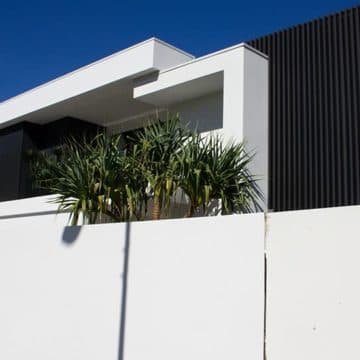What you need to look out for.
Are you looking to purchase a new home? Are you tossing up between a rendered house and non-rendered house? There are a few things you should know about rendered homes before you make a purchase.
Rendered houses are quite common on the property market and generally are highly sought after. Why do people render their homes before putting them on the market? There are several reasons. The most common is render provides an easy way to refurbish an old property or give your home a facelift. Rendered finishes are elegant, clean and sophisticated. Homes with render often look more polished than bare brick, bagged walls or foam render panels. Choosing to render can also create a sense of cohesiveness for houses which are made with different materials that don’t match in terms of design aesthetics. Any design can be achieved with a variety of colours and textures available when using acrylic render. There are also practical benefits to rendering your home, including providing an external waterproof layer and improving the fire rating.
However not all rendering jobs are considered equal, as with all applied finishes there are experts and rookies. This means there are some things that can go wrong with the render if not applied properly.
Identifying a quality finish
There are several things to take note of when looking at the render of a house you are thinking of purchasing. Look at the appearance of the render on the walls, can you spot any of these things:
- Does the surface look even and smooth across the wall?
- Can you see any obvious cracks or bumps in the surface?
- Is there any separation of the render from the wall?
- Can you see any hollow spots? Are there places where you notice indentations that look like the render has sunken in?
- Look for places where the windows might overhang. If the render doesn’t have enough clearance from these overhanging places it can be a massive red flag.
The biggest and most dangerous issue to look out for is cracking. If there are cracks in the render it can result in the render falling off from the wall in big sheets. This outcome can be hazardous for anyone living in the home and it’s also very costly to repair.
If you notice any of the above issues, it’s best to think about the property again before committing to the purchase. Is the house worth the cost of repairing the poor rendering job?
How long does render last?
Render can last for many years, even decades, when applied to a clean wall by a skilled professional. It is the type of render used and the underlying mortar in the brickwork that plays a large role in the lifespan of render. An important note, any type of render can develop cracks if it suffers from water or salt crystallisation. This will greatly reduce the lifespan of the render.
Technology has brought us modern acrylic or plastic-based renders which can last from 20-40 years. The gap in lifespan is attributed to the smoothness of the job and how clean the walls were prior to application.
Traditional cement renders are more prone to shrinkage and cracking, with cracking occurring between the 7-15 year mark. Cement renders perform best with brickwork that has used cement-based mortars.
Soft lime-based mortars have to cope with more movement and the rigidity of the cement render can make this difficult which leads to cracks, bumps, hollow spots and breakage. However, lime-based renders are known for their longevity.
Ultimately the lifespan of render will depend on the type of render, if it best suits the house and time period it was built in.
Now you know what to look for in render to ensure a quality finish, happy house hunting!



